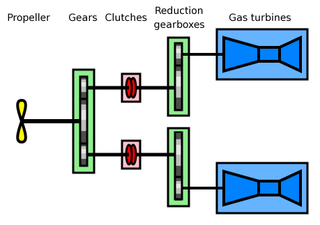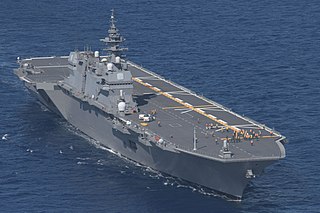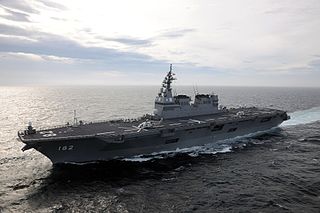The escort carrier or escort aircraft carrier, also called a "jeep carrier" or "baby flattop" in the United States Navy (USN) or "Woolworth Carrier" by the Royal Navy, was a small and slow type of aircraft carrier used by the Royal Navy, the United States Navy, the Imperial Japanese Navy and Imperial Japanese Army Air Force in World War II. They were typically half the length and a third the displacement of larger fleet carriers, slower, more-lightly armed and armored, and carried fewer planes. Escort carriers were most often built upon a commercial ship hull, so they were cheaper and could be built quickly. This was their principal advantage as they could be completed in greater numbers as a stop-gap when fleet carriers were scarce. However, the lack of protection made escort carriers particularly vulnerable, and several were sunk with great loss of life. The light carrier was a similar concept to the escort carrier in most respects, but was fast enough to operate alongside fleet carriers.

The Republic of Korea Navy, also known as the ROK Navy or South Korean Navy, is the naval warfare service branch of the South Korean armed forces, responsible for naval and amphibious operations. The ROK Navy includes the Republic of Korea Marine Corps, which functions as a branch of the Navy. The ROK Navy has about 70,000 regular personnel including 29,000 Republic of Korea Marines. There are about 140 commissioned ships in the ROK Navy. The naval aviation force consists of about 70 fixed-wing and rotary-wing aircraft. The ROK Marine Corps has about 300 tracked vehicles including assault amphibious vehicles.

The Japan Maritime Self-Defense Force, abbreviated JMSDF, also simply known as the Japanese navy, is the maritime warfare branch of the Japan Self-Defense Forces, tasked with the naval defense of Japan. The JMSDF was formed following the dissolution of the Imperial Japanese Navy (IJN) after World War II. The JMSDF has a fleet of 154 ships, 346 aircraft and 50,800 personnel.

The Ōsumi class (おおすみ型輸送艦), is a Japanese tank landing ship. The class is also known as the Oosumi class. While the Japan Maritime Self-Defense Force (JMSDF) describes the Ōsumi class as tank landing ships (LSTs), they lack the bow doors and beaching capability traditionally associated with LSTs. Functionally, their well deck makes the Ōsumi class more like a dock landing ship (LSD).

Combined gas turbine and gas turbine (COGAG) is a type of propulsion system for ships using two gas turbines connected to a single propeller shaft. A gearbox and clutches allow either of the turbines to drive the shaft or both of them combined.

The Haruna-class destroyer was a destroyer class built for the Japan Maritime Self-Defense Force (JMSDF) in the early 1970s. These helicopter carrying destroyers (DDH) are built around a large central hangar which houses up to three helicopters.

A green-water navy is a maritime force that is capable of operating in its nation's littoral zones and has limited competency to operate in the surrounding marginal seas. It is a relatively new term, and has been created to better distinguish, and add nuance, between two long-standing descriptors: blue-water navy and brown-water navy.

The Hyūga-class helicopter destroyer is a class of helicopter carrier built for the Japan Maritime Self-Defense Force (JMSDF). Two - Hyūga and Ise - were built; upon completion the class were the largest ships built for the Japanese navy since the Second World War. Hyūga was described in a PBS documentary as the "first Japanese aircraft carrier built since WWII".

The aircraft cruiser is a warship that combines the features of the aircraft carrier and a surface warship such as a cruiser or battleship.

JS Haruna (DDH-141) was the lead ship of the Haruna-class helicopter destroyer of the Japanese Maritime Self Defense Force.

The Izumo-class destroyers are helicopter destroyers in service with the Japan Maritime Self-Defense Force (JMSDF). The official classification of these ships is DDH, which is accepted by the United States Naval Institute; in contrast, Jane's Fighting Ships describes this official classification, but the classification is simply "helicopter carrier".

ROKS Dokdo (LPH-6111) is the lead ship of the Dokdo-class amphibious assault ship of the Republic of Korea Navy, launched on 12 July 2005 at the shipyard of Hanjin Heavy Industries & Constructions Co. in Busan. ROKS Dokdo was the flagship of the Fifth Component Flotilla of the Korean Navy until the launch of ROKS Marado in 2018. Previously, this title was held by the 9,000-ton at-sea Underway Replenishment (UNREP) support vessel ROKS Cheonji.

JS Hyūga (DDH-181) is the lead ship of the Hyūga-class helicopter destroyers of the Japan Maritime Self-Defense Force (JMSDF).

Operation Kita was conducted by the Imperial Japanese Navy (IJN) during the Pacific War in February 1945. Its purpose was to return two Ise-class hybrid battleship-aircraft carriers and four escort ships to Japan from Singapore, where they had been based since November the previous year. The movement of the Japanese force was detected by the Allies, but all attempts to attack it with submarines and aircraft failed. Nevertheless, as a result of the intensifying Allied blockade of Japan, the Ise-class battleship-carriers and their escorts were among the last IJN warships to safely reach the country from the Southwest Pacific before the end of the war.

JS Ise (DDH-182) is a Hyūga-class helicopter destroyer of the Japan Maritime Self-Defense Force (JMSDF). It is the second ship to be named Ise, the first being the Imperial Japanese Navy World War II-era battleship Ise.

JS Izumo (DDH-183) is a helicopter carrier which, as of 2022, is being converted into a light aircraft carrier. Officially classified as a multi-purpose operation destroyer, she is the lead ship in the Izumo class of the Japan Maritime Self-Defense Force (JMSDF). She is the second warship to be named for Izumo Province, with the previous ship being the armored cruiser Izumo (1898).

FCS-3 is an integrated naval weapons system developed by the Japanese Defense Ministry for the Japan Maritime Self-Defense Force.

JS Hiei (DDH-142) was the second ship of the Haruna-class helicopter destroyer of the Japanese Maritime Self Defense Force.

JS Kaga (DDH-184) is a helicopter carrier being converted into an aircraft carrier beginning in March, 2022. Officially classified as a multi-purpose operation destroyer, she is the second ship in the Izumo class of the Japan Maritime Self-Defense Force (JMSDF), the other being JS Izumo. Her namesake arises from Kaga Province in present-day Ishikawa Prefecture.
















